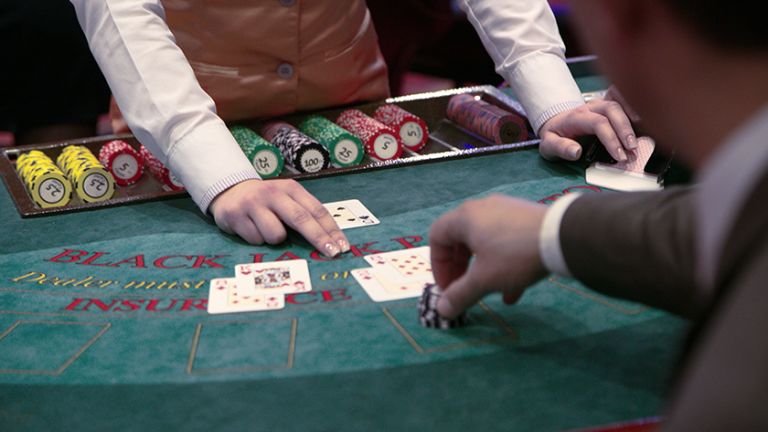Blackjack Deck Size and Its Effect on the House Edge
There are many different advantages players can look for when they play blackjack. Some of these advantages involve coming up with card counting strategies Other advantages are simply found by looking for tables that have good odds (3:2 instead of 6:5). One of the most simple ways to come up with an advantage over the house, however, is simply finding a table with a smaller deck size. Read below to know more about blackjack deck size and its effect on the house edge.
Deck Size and Player Advantage
It may seem like a simple trick, but finding a smaller deck size is one of the best advantages you could have! The house knows this, which is why many casinos try to make sure their blackjack tables tend to have a higher number of decks. If you can find a low deck size at a table, make sure you sit down. Your odds of winning will be increased even if you don’t know basic strategy or how to count cards. The reason for this is simple – the fewer cards there are in play, the fewer cards you have to keep track of in order to make your bet. You’ll notice patterns with the cards even if you aren’t counting.
How Does the House Edge Correlate to Deck Size?
You may be starting to understand why your odds improve when you sit at a table with fewer cards, but do you understand your disadvantage when you sit at a table with a high deck size? It obviously stands to reason that the edge for the house goes up when it has more cards – the more cards it has the bigger its advantage is. But just how much does their advantage increase. The answer depends on the version of blackjack you’re playing. In order to evaluate the edge, we’ll assume that the player uses a basic strategy and doesn’t make any mistakes.
If you’re playing a 3:2 game, a table using just 1 deck of cards will have a house edge of 0.16%. These odds seem pretty fair to the player, right? But when a table uses 2 decks, the house edge goes up to 0.46%! That increase is very significant! Looking at this, it’s easy to understand why the house prefers bigger deck sizes.
If a 3:2 game uses 4 decks, their edge increases to 0.60%. If the game uses 6 decks their edge goes up to 0.64% edge. Finally, if the table uses 8 decks, the house edge increases to 0.66% over the player. Keep in mind that these edges are calculated assuming that the player never makes a mistake with their basic strategy. If they do make mistakes, the house edge increases dramatically.
If you’re playing a 6:5 game, the edge lies even more in the house’s favor. If you play with 1 deck the house edge is 1.55% – much more significant than 1 deck in a 3:2 game. If you play a 6:5 game with 2 decks, the house advantage is a 1.83% edge. If you play with 4 decks, the house has a 1.96% edge. If you play with 6 decks, the house has a 1.99% edge. Finally, if you play with 8 decks, the house has a 2.019% edge.
Read more Blackjack related topics below:


